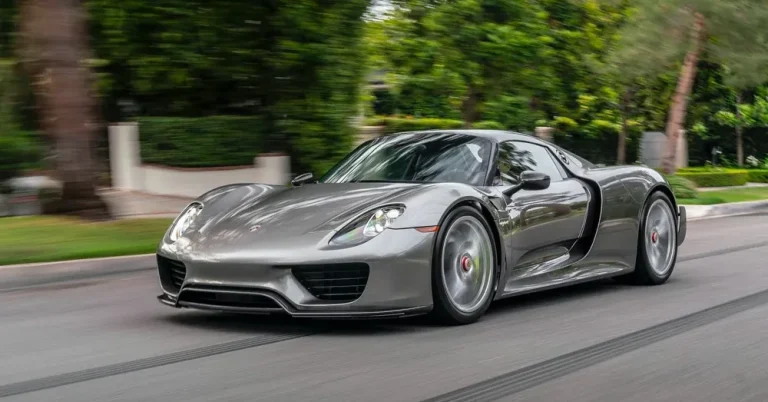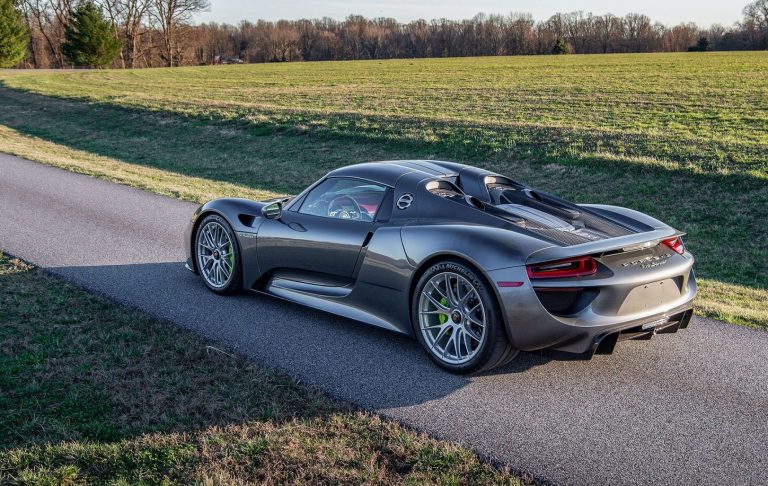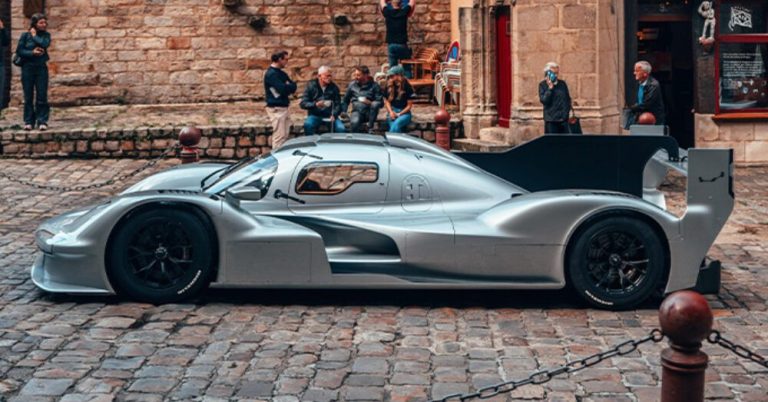Porsche 918 (2013)
In 2007, Porsche made the decision to stop producing the GT, which left a gap in their lineup without a Hypercar. This prompted their engineers to start developing a successor. At first, the Directors at Porsche were not particularly excited about the idea, but that sentiment shifted dramatically when they received over 2,000 inquiries from potential buyers. This surge of interest led the board at Porsche AG in Stuttgart to take the project more seriously and invest in its development. The design phase moved forward, and by March 2010, the first concept of the 918 Spyder was revealed at the Geneva Motor Show. Production officially began in September 2013, and by December 2014, every one of the 918 units had been sold out.
The 918 Spyder is powered by a naturally aspirated V8 engine that weighs only 135 kg (298 lbs), which is primarily based on the RS Spyder Le Mans Prototype racing car. In addition to the V8, it is equipped with two electric motors that contribute an impressive 282 bhp to the rear wheels. This combination allows the Spyder to achieve remarkable performance, accelerating from 0 to 62 mph (0 to 100 km/h) in just 2.6 seconds. It also boasts a top speed of 214 mph (345 km/h), showcasing its incredible engineering.
The development of the 918 Spyder not only filled the void left by the GT but also set a new standard for performance and innovation in the Hypercar segment. With its unique blend of a powerful combustion engine and electric motors, it represents a significant step forward in automotive technology. The overwhelming response from buyers and the successful sales figures reflect the excitement and demand for such a groundbreaking vehicle, solidifying Porsche's reputation in the high-performance market.



Porsche 963 RSP
In April 1975, a Le Mans race prototype known as the Porsche 917 set off on an extensive journey along public roads, starting from its factory in Zuffenhausen and making its way through Paris.
Fifty years later, a remarkable road-going Hypercar has been created through a collaborative effort involving Porsche AG, Porsche Penske Motorsport, and Porsche Cars North America. The 963 RSP draws considerable inspiration from the 917 and was born during a meeting at the track with Timo Resch, President and CEO of Porsche Cars North America, Thomas Laudenbach, Vice President of Porsche Motorsport, and Urs Kuratle, Director of Factory Racing LMDh at Road Atlanta. This small group of Porsche executives sought to recreate the historic journey of the 917 from fifty years ago, which led them to present their concept to the Managing Director of Porsche Penske Motorsports, who agreed to support the team on the condition that he would become the car's customer.
In contrast to its predecessor, the 963 RSP features handcrafted luxury and a custom interior that combines Alcantara and carbon seats adorned with soft tan leathers. The rest of the air-conditioned interior is also finished in light Alcantara, and alongside the intricately leather-bound steering wheel, you will even find a detachable cup holder.
Mechanically, the 963 RSP boasts a raised ride height for enhanced comfort during road use, and with the addition of turn signals and adjustable headlights, this Hypercar is fully road legal.
Beneath the 963 RSP’s Kevlar and carbon fibre exterior lies a hybrid 4.63-litre twin-turbocharged V8 engine paired with lithium-ion batteries, capable of operating on electric power alone or in combination with the engine. Its V8 engine is derived from the RS Spyder race program, which is managed by Penske and has previously secured all titles in the LMP2 class of the American Le Mans series for two consecutive years from 2006 to 2008, although it now utilises two turbochargers.

